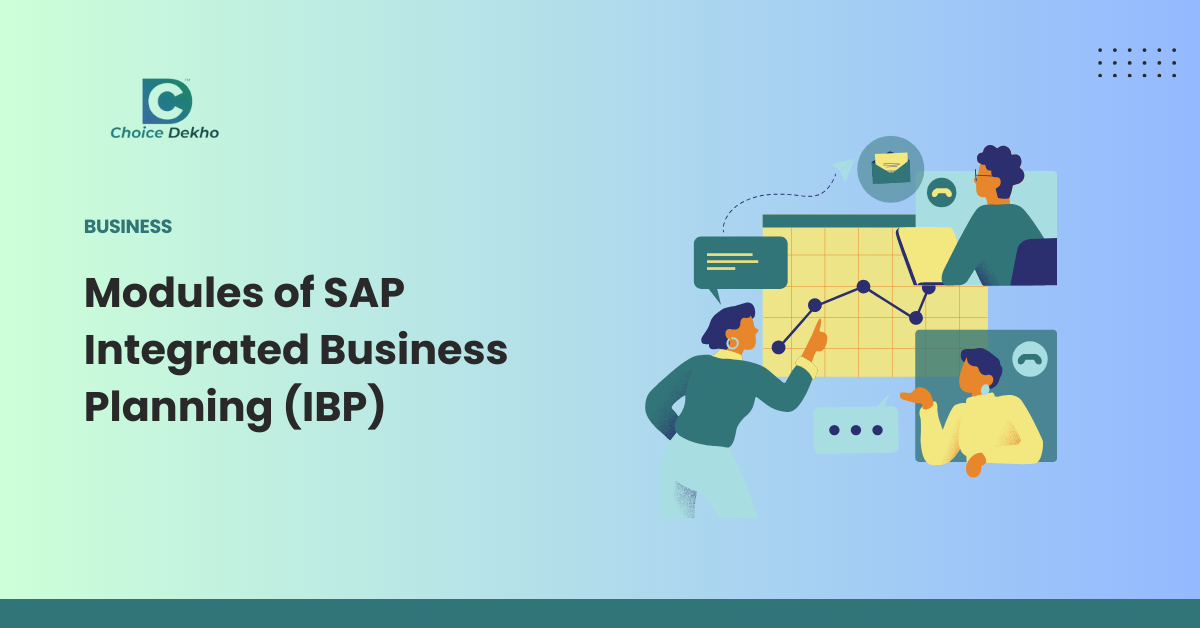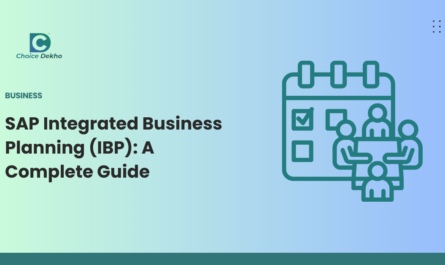Companies require more than a traditional supply chain. They need an integrated, foresighted, and analytical approach towards planning. This is where SAP Integrated Business Planning (SAP IBP) comes in.
First of all, there is a frequently asked question that we need to clarify. What does SAP IBP full form refer to? It stands for SAP Integrated Business Planning, which is a planning application using AI and Machine Learning to optimize supply chain processes and is available via the cloud. Companies using IBP in SAP are able to enhance their decision-making, forecasting, and reaction to market changes.
Let’s examine the main SAP IBP modules and their impact on business processes.
Important Parts of SAP IBP Calculation Modules
1. SAP Forecasting Module
Effective forecasting of demand is vital for ensuring accuracy in supply chain processes.
The SAP forecasting module (or SAP IBP for Demand) applies to businesses in the following ways:
- Adjust forecasting to real-time AI with demand sensing.
- Detect trending patterns with AI and machine learning.
- Readjust analytic forecasts to perceived demand value with foresight help.
- Set precise and actionable plans for segments and promotions.
2. SAP IBP for Integrated Business Planning for Inventory Management
Meeting customer demands alongside stock preservation requires a business to effectively balance its inventory. Through this module, businesses can:
- Avoid being over or under-stocked through precise analysis of supply and demand fluctuations.
- Avoid overstocking while setting safety stock levels to meet demand with real-time data.
- Advance through multiple phases of inventory control to resolve work efficiency problems.
- Set and analyze precise over or understock targets with AI-based risk assessments.
3. SAP IBP for Supply
Seamless operations rely on an agile supply network. This module allows for:
- Faster collaboration of suppliers and business owners making use of superior shared planning tools.
- Scenario analysis allowing quick and precise decisions to be made in an ever-changing market.
- With improved visibility into the global supply chain, the entire network becomes accessible in real time, enabling smarter decision-making.
- Employing supply strategizing to ensure optimal planning with constraint-based techniques.
4. SAP IBP for Sales & Operations Planning (S&OP)
Integrating supply chain planning into business strategy is essential. The S&OP module goals include:
- A significant number of sales and supply data can be captured and processed, enhancing the decision-making process.
- Collaboration of two or more departments in a business to step up the results.
- Planning using scenarios in anticipating changes between demand and supply.
- KPI tracking in combination with dashboards.
Also Read: SAP Integrated Business Planning (IBP): A Complete Guide
5. SAP IBP for Response & Supply
Supply chain sudden interruptions can account for major losses. This module assists businesses in:
- Adjusting supply plans instantaneously due to increases or drops in demand.
- Using allocation planning to give priority to more crucial orders.
- Executing response actions automatically into systems.
- Integrating easily with SAP S4/HANA and other ERP systems.
Learn SAP IBP with Choice Dekho Courses
If your goal is to gain proficiency in SAP Integrated Business Planning, Choice Dekho Courses offers training in:
- SAP Asset Accounting – Depreciation Methods – Master different depreciation methods in SAP Asset Accounting for accurate financial reporting.
- SAP FICO (Financial Accounting & Management Accounting) – Gain expertise in SAP FICO for effective financial and management accounting.
- Learn SAP ABAP from Scratch (Real-Time Scenarios) – Start coding in SAP ABAP with real-world scenarios to develop custom applications.
- The Complete SAP Workflow Training – Learn to automate and optimize business processes using SAP Workflow.
Final Thoughts
From projecting demand to optimizing supply chains, IBP in SAP provides the ability to carry out business processes in a competitive environment. Businesses can introduce flexibility into their processes through the integration of the SAP Forecasting Module, Real-time Analytics, and AI-driven Insights. As a result, efficiency and customer satisfaction can be significantly improved.




